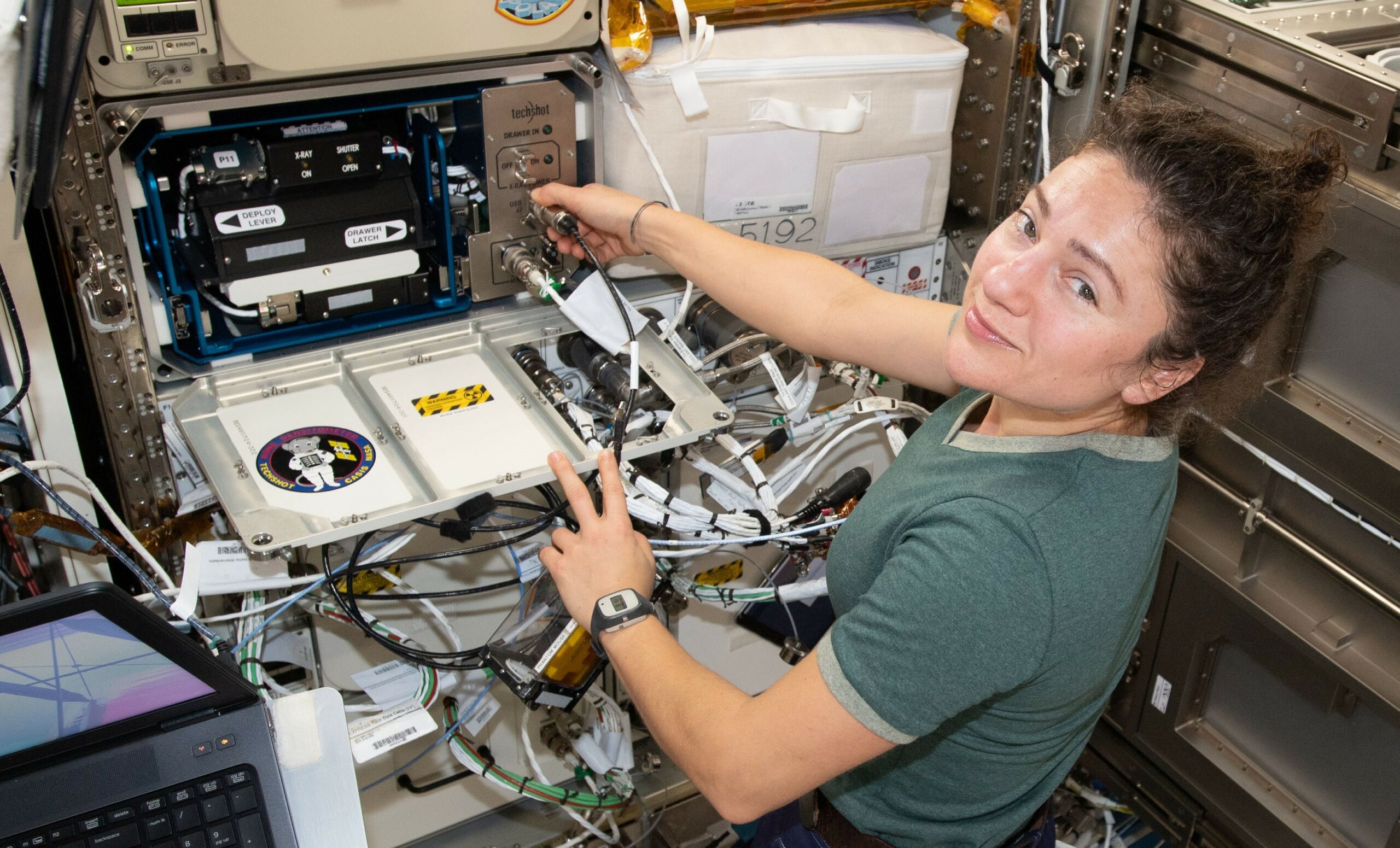Turning Lab Mice Into Superheroes
January 7, 2020 • By Lyle Smith, Contributing Author
What does it take to turn a run-of-the-mill, average laboratory mouse into a Mighty Mouse? More than just a mouse-sized superhero costume, according to researchers at The Jackson Laboratory who launched an experiment to the International Space Station (ISSInternational Space Station) on SpaceX’s 19th commercial resupply services mission last month. The experiment returned to Earth earlier today when the Dragon spacecraft splashed down in the Pacific Ocean.
The research team, led by Principal Investigator Dr. Se-Jin Lee, sent 40 female mice to the ISS U.S. National Laboratory in hopes of improving treatments for patients on Earth with disuse muscle atrophy. This condition is common among patients who lose muscle mass and strength from a lack of movement for extended periods of time, such as patients recovering from hip fractures, those in intensive care, and the elderly.
Mighty Mice on NPR
Read more about the Mighty Mice investigation in a piece published by NPR titled “Scientists Sent Mighty Mice To Space To Improve Treatments Back On Earth.” In the piece, the research team talks about the development of the Mighty Mice and what it was like to launch their research into space.
Specifically, The Jackson Laboratory team’s project is designed to examine the effects of targeting the myostatin and activin signaling pathways in preventing skeletal muscle and bone loss. Among the 40 mice sent to the ISS are several the team is calling “Mighty Mice,” thanks to the fact that they lack the gene for producing myostatin, a growth factor that normally acts to limit muscle growth in both mice and humans. This results in Mighty Mice with skeletal muscles almost twice the size of muscles in normal mice.

NASANational Aeronautics and Space Administration astronaut Jessica Meir works with the Techshot Bone Densitometer to assess bone density of the animal subjects for the Mighty Mice investigation.
Media Credit: NASA
MicrogravityThe condition of perceived weightlessness created when an object is in free fall, for example when an object is in orbital motion. Microgravity alters many observable phenomena within the physical and life sciences, allowing scientists to study things in ways not possible on Earth. The International Space Station provides access to a persistent microgravity environment. induces rapid muscle and bone loss in astronauts, as well as in mice, if they do not faithfully exercise their muscles and bones while in orbit. This enables researchers to study accelerated models of these diseases using mice or other animal models. By using the accelerated environment on the ISS to examine mice that produce myostatin for comparison with mice that lack myostatin, the research team hopes to collect critical data to support clinical trials for myostatin therapies to benefit patients here on Earth. Conducting the experiment onboard the ISS promises to produce data that better mimics human skeletal and muscle diseases over a shorter period of time than experiments on the ground. The 40 spaceflight mice were returned to Earth live for analysis.
When Mighty Mouse first flew across American Saturday matinee movie screens in 1942 singing “Here I come to save the day!”, it was his strength, honor, and commitment to others that made him a hero to children across the country. Now, the Mighty Mice in space, along with the focused and dedicated commitment of The Jackson Laboratory team and ISS crew, could provide some of the same heroics to patients here on Earth—cape and song not required.